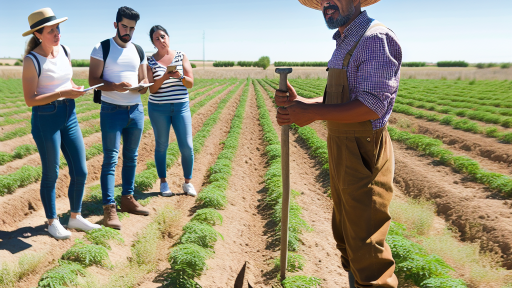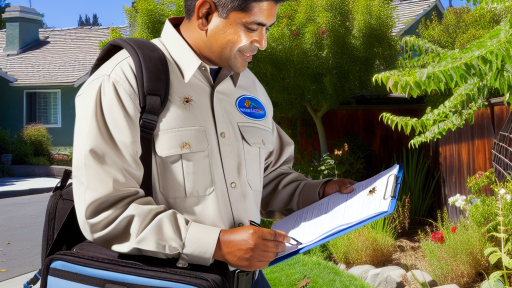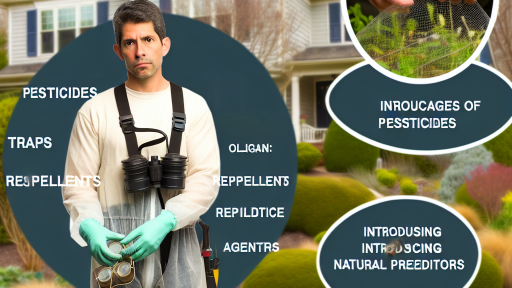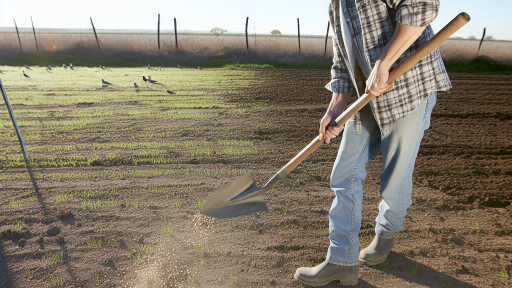Introduction to Water Management in Agriculture
Water management plays a critical role in agriculture today.
Farmers face challenges such as drought and water scarcity.
Proper water management enhances crop yields and sustainability.
Farmers must adopt efficient practices to optimize water use.
Importance of Water Management
Water is essential for all forms of life, including crops.
Effective water management can lead to improved food security.
It also protects ecosystems and maintains biodiversity.
Additionally, it helps mitigate the effects of climate change.
Challenges in Water Management
A variety of challenges hinder efficient water management.
Climate change results in unpredictable weather patterns.
Moreover, population growth increases water demand.
Over-extraction of water resources is another significant issue.
Innovative Techniques for Water Conservation
Farmers can adopt several innovative techniques.
Drip irrigation delivers water directly to plant roots.
This method minimizes evaporation and run-off.
Transform Your Agribusiness
Unlock your farm's potential with expert advice tailored to your needs. Get actionable steps that drive real results.
Get StartedRainwater harvesting captures and uses natural rainfall.
Similarly, mulching retains soil moisture effectively.
Benefits of Efficient Water Management
Efficient water management offers numerous benefits.
It increases crop productivity and profitability for farmers.
Moreover, it enhances environmental sustainability.
Farmers can reduce their cost of irrigation significantly.
Additionally, it promotes resilience to climate variability.
The Importance of Efficient Water Use in Farming
Efficient water management is vital for modern agriculture.
It maximizes crop yield while minimizing resource waste.
Farmers face increasing challenges due to climate change.
These challenges lead to unpredictable water availability.
Conserving Water Resources
Water scarcity affects food production globally.
By adopting efficient practices, farmers can conserve vital water resources.
Techniques such as drip irrigation enhance water use efficiency.
These methods deliver water directly to the plant roots.
Consequently, crops receive the exact amount they require.
Enhancing Crop Resilience
Efficient water use contributes to stronger crop resilience.
Healthy plants can better withstand drought and pests.
This resilience leads to more stable food supplies.
Moreover, efficient practices reduce the risk of crop failure.
Economic Benefits
Investing in water-efficient technologies can save farmers money.
Lower water usage translates to reduced utility bills.
Additionally, enhanced crop productivity boosts farm profitability.
Farmers can reinvest savings into their operations.
Showcase Your Farming Business
Publish your professional farming services profile on our blog for a one-time fee of $200 and reach a dedicated audience of farmers and agribusiness owners.
Publish Your ProfileEnvironmental Impact
Efficient water management helps protect ecosystems.
It reduces runoff and water pollution, improving water quality.
Healthy ecosystems support biodiversity and natural balance.
This approach fosters a sustainable agricultural environment.
Traditional vs. Modern Water Management Techniques
Overview of Traditional Techniques
Traditional water management techniques have been used for centuries.
Farmers relied on natural rainfall and surface water sources.
Additionally, techniques such as furrow irrigation were common.
These methods often resulted in significant water waste.
However, they required minimal investment and infrastructure.
Limitations of Traditional Approaches
Traditional techniques frequently lack efficiency in water usage.
Many farmers struggled during droughts due to reliance on rainfall.
Moreover, pollution and sedimentation often contaminated water sources.
This further reduced the available water for irrigation.
Introduction to Modern Water Management Techniques
Modern water management techniques emerged in response to these challenges.
These practices emphasize efficiency and sustainability in agriculture.
They often incorporate advanced technology for monitoring and control.
Additionally, modern techniques aim to minimize environmental impact.
Efficiency of Modern Techniques
Precision irrigation systems maximize water use efficiency.
Technologies such as drip irrigation deliver water directly to plants.
This minimizes evaporation and runoff significantly.
Furthermore, smart sensors monitor soil moisture levels in real-time.
Adoption of Integrated Water Resource Management
Integrated Water Resource Management (IWRM) integrates various strategies.
This approach considers all aspects of water use in agriculture.
IWRM promotes collaboration among stakeholders for better outcomes.
Consequently, it leads to the sustainable use of water resources.
Case Studies of Successful Modern Techniques
Many regions have successfully implemented modern water management practices.
In Israel, farmers utilize drip irrigation to conserve water.
Moreover, Australia employs rainwater harvesting extensively.
These case studies highlight the benefits of modern methods.
Find Out More: Best Practices For Soil Erosion Prevention
Advanced Irrigation Systems: Drip and Sprinkler Irrigation
Introduction to Irrigation Systems
Irrigation plays a critical role in agriculture.
It ensures crops receive adequate water throughout their growth.
Advanced irrigation systems improve water efficiency significantly.
Drip Irrigation
Drip irrigation delivers water directly to plant roots.
This method minimizes water waste by reducing evaporation.
Farmers can install drip systems in various terrains.
Additionally, drip irrigation enhances crop yields and quality.
It helps to prevent weed growth by targeting moisture application.
Components of Drip Irrigation
Drip irrigation systems consist of several essential components.
- Drippers: They release precise amounts of water.
- Filtration systems: They prevent clogging of drippers.
- Pipes and tubing: They convey water to the plants.
These components work together for effective water management.
Showcase Your Farming Business
Publish your professional farming services profile on our blog for a one-time fee of $200 and reach a dedicated audience of farmers and agribusiness owners.
Publish Your ProfileBenefits of Drip Irrigation
This method offers several advantages for farmers.
- Water conservation: It uses up to 60% less water than other methods.
- Reduced labor costs: Automated systems minimize manual work.
- Flexibility: It can be adapted for different types of crops.
Farmers increasingly adopt drip irrigation for its efficiency.
Sprinkler Irrigation
Sprinkler irrigation mimics natural rainfall.
Water sprays over crops from above, ensuring even distribution.
This system is particularly useful for large fields.
Types of Sprinkler Systems
Various types of sprinkler systems cater to different needs.
- Permanent systems: They are fixed in place for ongoing use.
- Portable systems: These can be moved according to crop requirements.
- Center pivot systems: They rotate around a central point for wide coverage.
Farmers choose systems based on their land and crop types.
Advantages of Sprinkler Irrigation
This irrigation method offers multiple benefits.
- Uniform water distribution across the field.
- Low dependency on soil type.
- Ability to provide water during high temperatures.
Sprinkler systems are versatile and widely used in agriculture.
Comparing Drip and Sprinkler Irrigation
Both systems have unique benefits and limitations.
Drip irrigation is more efficient in water use.
On the other hand, sprinkler systems cover larger areas quickly.
Farmers should consider their specific needs before choosing a system.
Ultimately, adopting the right irrigation method increases productivity.
Find Out More: The Importance Of Organic Matter In Soil Health
Soil Management Practices for Improved Water Retention
Understanding Soil Composition
Soil composition affects water retention capacity.
Clay-rich soils hold water better than sandy soils.
Thus, understanding these differences helps in selecting the right agricultural practices.
Utilizing Organic Matter
Incorporating organic matter improves soil structure.
Organic materials such as compost boost water retention significantly.
Moreover, these materials enhance soil fertility and health.
Implementing Mulching Techniques
Mulching effectively reduces evaporation from the soil surface.
It keeps the soil moist during dry spells.
Furthermore, mulches can suppress weed growth and improve soil quality.
Cover Cropping
Cover cropping prevents soil erosion while adding organic matter.
These crops improve soil aeration and water infiltration.
Consequently, they enhance the overall water retention capacity of the soil.
Practicing Crop Rotation
Crop rotation diversifies plant types grown on the same land.
This technique improves soil health, thus promoting better water retention.
Different plants contribute varying nutrients, enhancing soil quality.
Incorporating Conservation Tillage
Conservation tillage minimizes soil disturbance.
This practice retains moisture and improves soil structure.
As a result, less soil erosion occurs, leading to better water retention.
Monitoring Soil Moisture Levels
Regularly monitoring soil moisture allows timely interventions.
Implementing moisture sensors can help manage irrigation efficiently.
This ensures that crops receive adequate water without wastage.
Adopting Integrated Water Management Strategies
Integrating water management practices optimizes water use.
These strategies ensure sustainable agricultural practices while conserving resources.
Ultimately, this leads to improved yields and lower environmental impacts.
Delve into the Subject: Cover Crops to Enhance Water Retention
Showcase Your Farming Business
Publish your professional farming services profile on our blog for a one-time fee of $200 and reach a dedicated audience of farmers and agribusiness owners.
Publish Your Profile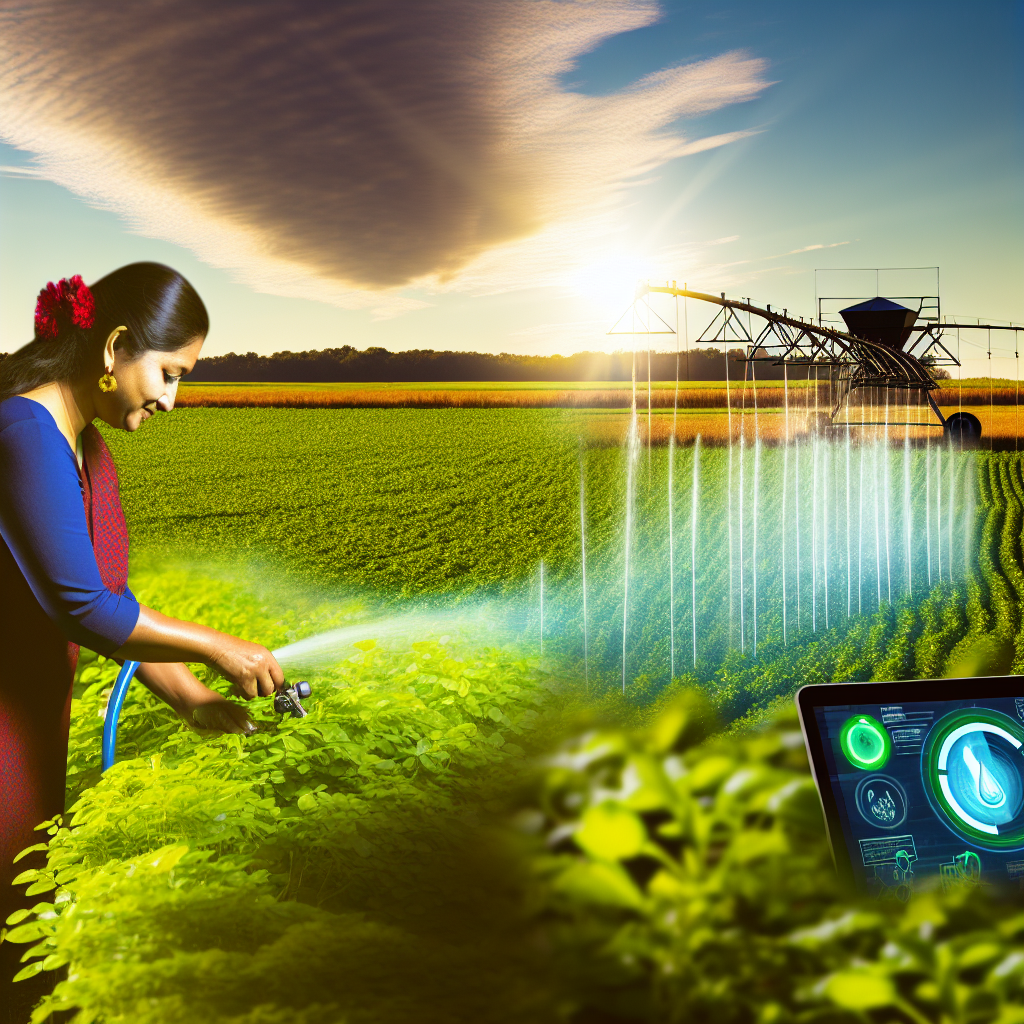
Rainwater Harvesting as a Sustainable Water Source
Understanding Rainwater Harvesting
Rainwater harvesting captures and stores rainwater for future use.
This practice helps reduce the reliance on traditional water sources.
Furthermore, it promotes sustainable agriculture practices.
Benefits of Rainwater Harvesting
Rainwater harvesting provides several advantages for farmers.
- It reduces irrigation costs significantly.
- This method ensures a reliable water supply during dry seasons.
- Using harvested rainwater improves crop yield.
Moreover, it decreases the risk of soil erosion.
Implementation Strategies
Farmers can implement rainwater harvesting in various ways.
- Establishing rain barrels for direct collection from rooftops.
- Constructing ponds or reservoirs to store larger volumes.
- Utilizing permeable surfaces for groundwater recharge.
These practices require proper planning and maintenance.
Case Studies and Success Stories
Many agricultural communities have successfully adopted rainwater harvesting.
For instance, the Blythe farm in California saw a 30% reduction in water costs.
Additionally, the Southern Plains Cooperative increased crop diversity through this method.
Challenges and Considerations
Despite its benefits, rainwater harvesting faces challenges.
- Initial setup costs can be high for some farmers.
- Limited knowledge about maintenance and effectiveness exists.
- Weather variability can affect collection rates.
Addressing these issues is crucial for wider adoption.
Uncover the Details: Integrated Pest Management Techniques for Farmers
Technological Innovations in Water Monitoring and Management
Introduction to Innovations
Technological advancements revolutionize water management in agriculture.
Farmers leverage these innovations to enhance efficiency and sustainability.
Consequently, these tools help conserve vital water resources.
Smart Irrigation Systems
Smart irrigation systems optimize water usage for crops.
They utilize sensors to monitor soil moisture levels accurately.
Additionally, these systems adjust water delivery based on weather forecasts.
As a result, they minimize water wastage significantly.
Remote Monitoring Technologies
Remote monitoring allows real-time tracking of irrigation systems.
Farmers can receive alerts about potential issues instantly.
Moreover, this technology aids in scheduling irrigation more effectively.
Mobile Applications
Mobile applications enhance water management on farms.
These apps provide farmers with data at their fingertips.
Users can analyze trends and make informed decisions swiftly.
Drip Irrigation Techniques
Drip irrigation techniques deliver water directly to plant roots.
These methods reduce evaporation and runoff substantially.
Therefore, crops receive the precise amount of water they need.
Benefits of Drip Irrigation
Drip irrigation conserves water resources effectively.
It also minimizes weed growth by targeting specific areas.
Consequently, farmers save time and labor costs.
Soil Moisture Sensors
Soil moisture sensors provide vital information about soil conditions.
These devices allow for precise irrigation based on moisture levels.
Furthermore, they help prevent under- or over-irrigation situations.
Integration with Weather Data
Integrating weather data enhances irrigation scheduling.
Farmers can adjust their irrigation plans based on rainfall predictions.
This integration leads to more efficient water use and crop health.
Drones in Water Management
Drones offer a unique approach to monitor water usage in fields.
They can assess crop health and identify stress areas efficiently.
Showcase Your Farming Business
Publish your professional farming services profile on our blog for a one-time fee of $200 and reach a dedicated audience of farmers and agribusiness owners.
Publish Your ProfileFurthermore, drones map water distribution across agricultural lands.
Data Collection and Analysis
Data collected from drones aids in resource allocation decisions.
Farmers can assess which areas require more water effectively.
This analysis leads to a more sustainable farming approach.
Innovative Water Management for Sustainable Agriculture
Technology significantly improves water management practices.
These innovations help farmers utilize water more effectively.
As a result, they support sustainable agricultural growth and productivity.
Case Studies: Successful Implementation of Water Management Practices
The Newlands Project
The Newlands Project in Nevada demonstrates effective water management.
This initiative transformed arid land into productive farmland.
Farmers implemented drip irrigation to conserve water.
As a result, they reduced water usage by 30% compared to traditional methods.
This project illustrates the benefits of technology in agriculture.
Israel’s National Water Carrier
Israel’s National Water Carrier showcases innovative water distribution.
This system captures water from the Sea of Galilee and redistributes it.
It serves various agricultural regions across the country.
Farmers utilize advanced irrigation techniques, enhancing efficiency.
Consequently, Israel has significantly increased its agricultural output.
Drip Irrigation in California
California has been a leader in implementing drip irrigation.
This technique allows for targeted watering of crops.
Farmers report up to 50% reduction in water usage compared to flood irrigation.
Moreover, it leads to higher yields and improved crop quality.
This practice exemplifies resource conservation in a drought-prone state.
Water Harvesting Techniques in India
In India, traditional water harvesting techniques have gained new popularity.
Farmers construct small ponds to capture rainwater for irrigation.
This method helps in replenishing groundwater levels.
Additionally, it reduces reliance on monsoon rains, enhancing food security.
Many communities now hold workshops to share knowledge on best practices.
Precision Agriculture in Australia
Australian farmers utilize precision agriculture for water management.
They employ sensors to monitor soil moisture levels continuously.
This data allows for a tailored irrigation schedule.
Consequently, farmers reduce water waste while maximizing crop health.
This approach combines technology with sustainable practices.
Additional Resources
Irrigation & Water Use – USDA ERS
What is Sustainable Agriculture? | Union of Concerned Scientists

